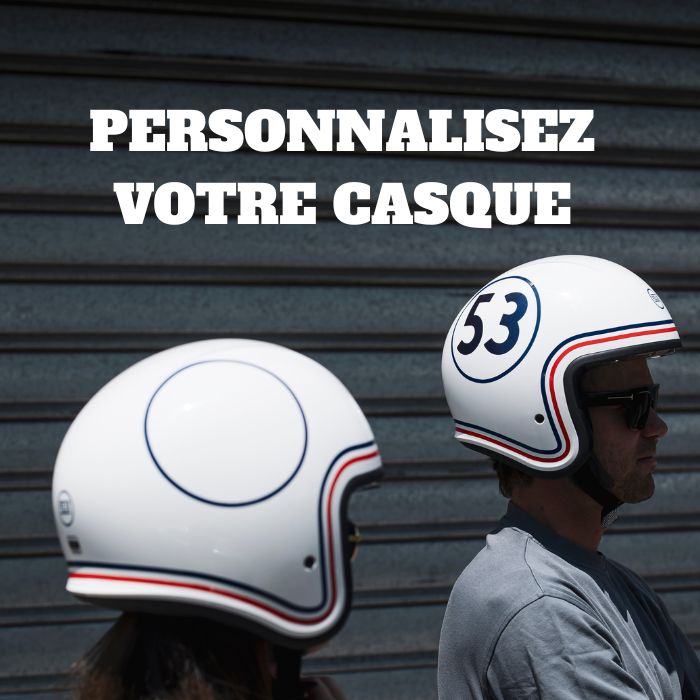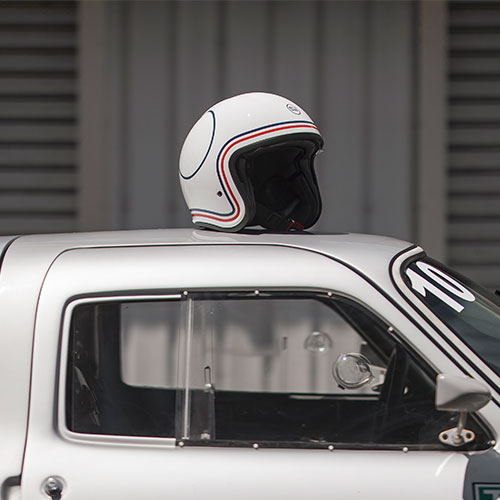Replacing your motorcycle helmet isn’t just an aesthetic choice—it’s essential for safety, comfort, and compliance with current standards. Helmets age, deteriorate, and can become ineffective even without visible damage. In this article, we explain why it’s important to renew your helmet regularly and which criteria to consider.
How long does a motorcycle helmet last?
The average lifespan of a helmet is about 5 years, even if it has never been involved in a crash. This guideline comes from most manufacturers because internal materials like expanded polystyrene gradually lose their shock-absorbing ability over time. Heat, UV exposure, humidity, and sweat accelerate this aging process. A helmet may look intact on the outside but no longer provide full protection. Therefore, it is recommended to replace it regularly, especially with daily use.
Is a helmet still reliable after an impact?
No. Even a light impact, such as dropping the helmet on the ground, can compromise its internal structure. The outer shell may look intact, but the inner cushioning (EPS) could be cracked. In the event of a second impact, the helmet will no longer properly absorb shock energy, increasing the risk of injury. You should always replace a helmet after an accident or significant drop, even if no visible damage is apparent.
What certification standards are currently in force?
In Europe, the ECE 22.06 standard has gradually replaced the 22.05 since 2022. It requires more rigorous tests on impact resistance, including lateral impacts, and takes into account rotational forces on the head. If your helmet is still certified under 22.05, it remains legally valid but does not offer the same level of protection as newer models. An ECE 22.06 certified helmet is currently the best choice for riding safely, especially if you ride regularly or at high speeds.
Is comfort a safety factor?
Yes. An uncomfortable helmet can be a distraction. It may cause neck pain, reduce concentration, or be worn improperly. A helmet that’s too large can shift during impact, while one that’s too tight becomes uncomfortable over long rides. Modern helmets offer snug interiors, removable padding, and effective ventilation systems. Choosing a comfortable helmet also improves your alertness and endurance on the road.
Are modern helmets truly more effective?
Modern helmets feature significant technical improvements: better ventilation, integrated sun visors, intercom compatibility, anti-fog treatments, and optimized weight. These advancements provide real usability benefits, especially for long rides or challenging conditions. They also enhance the helmet’s durability and adaptability to your riding style—whether city, highway, or road trips.
Can style be prioritized without compromising safety?
Style matters, but it should never come before compliance. Some vintage or customized helmets aren’t certified or have modifications that weaken the shell’s integrity. Today, it’s entirely possible to find helmets with retro or unique designs that still meet the strictest safety standards. Always check for the ECE certification label inside the helmet.
Conclusion: When should you replace your helmet?
You should replace your helmet:
- Every 5 years at most, even without an accident,
- Immediately after any impact or drop,
- If it doesn’t comply with the ECE 22.06 standard (or if its certification is questionable),
- When the padding or internal systems become uncomfortable or visibly worn,
- Or if the helmet no longer suits your current riding style (e.g., switching from scooter to motorcycle).
A well-fitted, recent, and well-maintained helmet is a crucial part of your road safety. It offers better protection, can be worn longer without discomfort, and may even enhance your riding experience.
 FULL FACE
FULL FACE
 JET
JET
 PROMOTIONS
PROMOTIONS
 NEW COLLECTION
NEW COLLECTION











